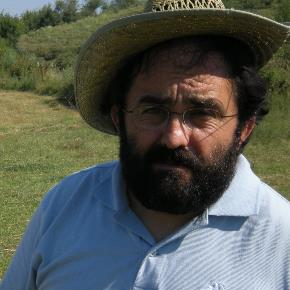Atmospheric Correction of Remote Sensing Imagery
A special issue of Remote Sensing (ISSN 2072-4292). This special issue belongs to the section "Atmospheric Remote Sensing".
Deadline for manuscript submissions: closed (28 February 2023) | Viewed by 19668
Special Issue Editors
Interests: remote sensing images; atmospheric corrections; radiative transfer; multispectral and hyperspectral imagers
Special Issues, Collections and Topics in MDPI journals
Interests: techniques of noise reduction in the hyperspectral images; radiometric and geometric correction of the hyperspectral images; atmospheric correction of the hyperspectral images
Special Issues, Collections and Topics in MDPI journals
Special Issue Information
Dear Colleagues,
As satellite sensor performance increases, developing accurate pre-processing procedures has become a priority to meet the need for many new and powerful remote-sensing applications.
One of the most challenging issues, particularly important in ground studies, is making the data repeatable over time and uniform with respect to the different sensors and acquisition platforms, i.e., to obtain data that represent the intrinsic characteristics of the observed target. The signal detected by the sensor depends on the geometry of the acquisition and the illumination conditions at the time of acquisition and is impacted by the presence of the air column and other factors, such as topography and BRDF. The atmospheric corrections have the role of cleaning the signal from unwanted contributions as much as possible and moving from the sensor radiance to a quantity more closely related to the properties of the target, such as ground reflectance or emissivity.
Over time, many techniques for atmospheric correction and image harmonization have been developed and, at present, a large amount of already corrected data have been distributed. The great diversity of approaches followed, and the fact that the various approaches can have different impacts depending on the specific application, mean that a discussion has become urgent.
Contributions relevant to this Special Issue may include:
- Review of currently existing methods for the correction and harmonization of remote sensing images;
- Comparative studies between different models and products;
- Validation approaches;
- Proposals for new technologies;
- Analysis work on the advantages and disadvantages of the different approaches in relation to specific applications.
Dr. Federico Santini
Dr. Angelo Palombo
Guest Editors
Related References
Palombo, A.; Santini, F. ImaACor: A Physically Based Tool for Combined Atmospheric and Topographic Corrections of Remote Sensing Images. Remote Sens. 2020, 12, 2076. https://0-doi-org.brum.beds.ac.uk/10.3390/rs12132076
Santini, F.; Palombo, A. Physically Based Approach for Combined Atmospheric and Topographic Corrections. Remote Sens. 2019, 11, 1218. https://0-doi-org.brum.beds.ac.uk/10.3390/rs11101218
Manuscript Submission Information
Manuscripts should be submitted online at www.mdpi.com by registering and logging in to this website. Once you are registered, click here to go to the submission form. Manuscripts can be submitted until the deadline. All submissions that pass pre-check are peer-reviewed. Accepted papers will be published continuously in the journal (as soon as accepted) and will be listed together on the special issue website. Research articles, review articles as well as short communications are invited. For planned papers, a title and short abstract (about 100 words) can be sent to the Editorial Office for announcement on this website.
Submitted manuscripts should not have been published previously, nor be under consideration for publication elsewhere (except conference proceedings papers). All manuscripts are thoroughly refereed through a single-blind peer-review process. A guide for authors and other relevant information for submission of manuscripts is available on the Instructions for Authors page. Remote Sensing is an international peer-reviewed open access semimonthly journal published by MDPI.
Please visit the Instructions for Authors page before submitting a manuscript. The Article Processing Charge (APC) for publication in this open access journal is 2700 CHF (Swiss Francs). Submitted papers should be well formatted and use good English. Authors may use MDPI's English editing service prior to publication or during author revisions.
Keywords
- Atmospheric correction
- Radiative transfer model
- Harmonization
- Interoperability
- Physical model
- Radiative transfer
- Adjacency
- Landsat
- Sentinel
- PRISMA
- Topographic correction
- BRDF
- Hyperspectral
- Imagery
- Reflectance
- Emissivity






